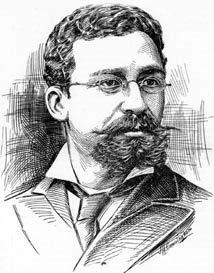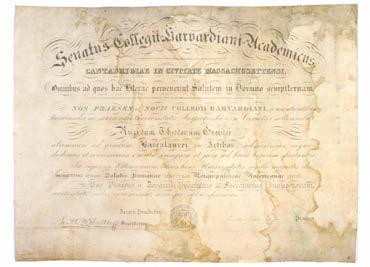
4 minute read
GIG MARCUS CROOKS, 33°
The lodge of perfection is that of the teaching of the inevitable degrees and contains the investigation of the true name and pronunciation of the name of Deity. We are taught to practice silence, obedience, and fidelity live a virtuous life, Be Zealous with benevolence, and act as the peacemaker. Judge not lest you yourself be judged, be the teacher of benevolence and charity let not your ignorance be the principal enemy of human freedom. with liberty comes truth be true to yourself and your God.
Written By SP James Morgan, III, 32°
Advertisement
Richard Theodore Greener was born on January 30, 1844, in Philadelphia, Pennsylvania. In his youth, Greener moved with his family to the city of Boston, where he briefly attended private school, but later had to drop out due to family responsibilities. Greener experienced racism and discrimination concerning his academic pursuits. Even though he had been born legally free, he was still a young, black man in slave-holding America. Greener enrolled at Oberlin College in Ohio and then attended Philips Academy in Andover, Massachusetts. After impressing the faculty at Philips, Greener was given the opportunity of a lifetime when he was selected to transfer to Harvard University as their first student of African descent.

Greener’s time at Harvard was difficult as he was not widely accepted by his fellow students, however, he successfully completed his program and won the prestigious Bowdoin Prize for elocution. Richard T. Greener graduated from Harvard as a member of the class of 1870. Richard T. Greener made history as the first African American to graduate from Harvard University. In the following two years, Greener took a job as the principal of the Institute for Colored Youth which was in the city of his birth, Philadelphia. It should be noted that he assumed the vacancy on account of the murder of abolitionist and activist Octavius Catto, who was himself a Prince Hall Freemason. Later, in 1873, Greener took the helm of Sumner High School in Washington, D.C., where he again distinguished himself for his leadership skills. Following his time at the Sumner High School, Greener worked as an associate editor with The New National Era newspaper, working as an assistant to the legendary Frederick Douglass.
Richard T. Greener’s life changed when he accepted the position of Professor of Mental and Moral Philosophy at the University of South Carolina, where he served as the first African American on the faculty. One can only imagine what he must have heard and felt working as a university professor in a state that only a decade prior had practiced human bondage. It is during this period that Greener is believed to have entered into the ranks of Freemasonry, becoming an early member of Shekinah Lodge which was at that time operating under the auspices of what is today the Most Worshipful Prince Hall Grand Lodge of Pennsylvania. Following a major split between the National Grand Lodge and the Independent State Grand Lodges, Shekinah Lodge would choose to remain loyal to the National Grand Lodge.
Greener’s legal career continued as he was hired as the trial attorney to defend Cadet Johnson Whitaker, the first West Point cadet of African descent from charges that he fraudulently faked a kidnapping and beating so that he could escape from taking final examinations. This case was so insulting to human intelligence that Whitaker was even accused of tying himself up. Although Greener did a remarkable job of defending Whitaker, this case was lost, with justice only arriving in the 1990s when President Bill Clinton overturned the ruling and reinstated Whitaker posthumously. Greener returned to Washington, D.C., where he be- came the Dean of Howard University Law School from 1878 to 1880.

Richard T. Greener’s life and career also touched what is today the Louis W. Roy Council of Deliberation. According to the May 22, 1879, issue of The Evening Star, on the prior evening, Galahad Lodge of Perfection had been organized by Thornton A. Jackson, Sovereign Grand Commander. Sovereign Grand Commander Jackson installed Professor Greener as the first Thrice Potent Master of Galahad Lodge of Perfection thus cementing his ties to our Orient. Richard T. Greener’s life continued to be one of great victories and immense losses. He took a post as one of America’s first African American diplomats, serving a tour as Grand Consul in Bombay, India, and then in Vladivosock, Russia. Greener served as the primary American diplomat during the Russo-Japanese War.
Sadly, due to his activism and frequent travels, his marriage to Ms. Genevieve Ida Fleet crumbled and his first wife and their six children changed their name to Greene to disassociate from this outspoken activist. His most famous daughter Bella de Costa Greene later passed for white and served as the librarian and mistress of banking magnate J.P. Morgan. Richard T. Greener’s life and masonic legacy were largely forgotten following his death in
1922, even though he had written much and given many lectures in his final decades living in Chicago. Greener’s personal papers were discovered in a home in Chicago in 2009 by construction crewmen and modern scholars began to rediscover the importance of this fascinating man. Two of the most interesting things discovered were Greener’s diploma from Harvard University and a patent declaring him a Grand Inspector General.
What makes this patent very fascinating is the fact that it was signed by fellow Chicago lawyer, John G. Jones, the Father of Clandestine Freemasonry in African American communities. Research conducted by this writer has shown that Greener was present at the formation of the United Supreme Council Southern Jurisdiction and named as our first Grand Herald by Sovereign Grand Commander James A. Handy on September 14, 1886. It appears that Greener may have been tricked by Jones, whom he trusted as a friend, and for a time worked with Jones in his irregular Scottish Rite organization until the facts were made known to him. Once Greener was made aware of how he had been misled, he corrected his error and returned to the true United Supreme Council in 1904.



